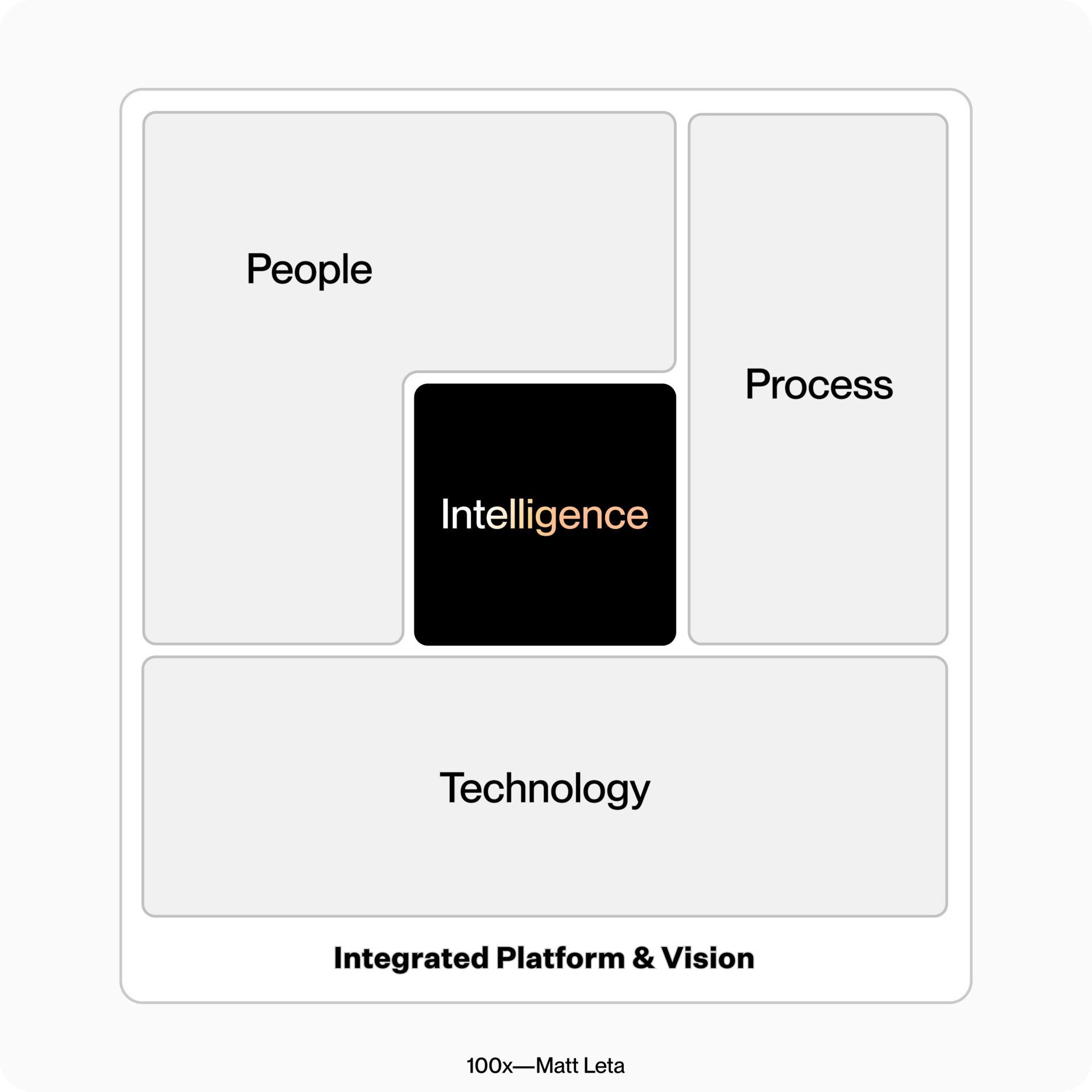- 🗼 Lighthouse — Newsletter by Future Works
- Posts
- Thought Piece: Your vendor owns you
Thought Piece: Your vendor owns you
Understand hidden contract clauses that trap businesses
Hi there,
I learned about vendor lock-in the hard way. Early in my career, I watched a promising startup crumble because they couldn't adapt fast enough. Their entire operation was built on a single vendor's ecosystem.
When that tech became outdated, they faced an impossible choice: rebuild from scratch or become irrelevant. Eighteen months later, they were sold for pennies.
That lesson shaped everything I do today. And it's more relevant than ever because in 2024, vendor lock-in isn't just inconvenient. It's the biggest threat to next-gen digital transformation and financially devastating.
The cost of being trapped
Nobody wants to admit that the average enterprise wastes $21 million annually on SaaS spending they can't control. I recently met with a manufacturing CEO who summed up their situation perfectly, "We're not making technology decisions anymore, our vendors are making them for us."
Their company had invested heavily in a major cloud provider's proprietary services. Now, even simple changes required expensive consultants and lengthy approval processes. They were spending $3.2 million annually just on maintaining integrations between their vendor's system and their other tools. Worse yet, their AI transformation initiatives were completely stalled because their vendor hadn't prioritized AI capabilities.
Sound familiar?
The numbers are staggering. 47% of organizations identify vendor lock-in as a major challenge, while 72% exceeded their cloud budgets in 2023-2024. The average enterprise manages 275 SaaS applications, yet 49% of licenses remain unused. It's like paying for a gym membership you never use except it's millions of dollars and it's blocking your digital innovation efforts.

And the real kicker? AT&T got hit with a 1,050% price increase from Broadcom for VMware services. Their estimated migration cost to escape was $40-50 million. That's not a vendor relationship,. I think that's a digital hostage-taking.
The psychology of digital stockholm syndrome
There's a psychological component to this that few people talk about. Organizations develop what I call "vendor Stockholm syndrome." They begin to rationalize their dependency. This is where leadership and innovation collide with fear. I've heard executives say things like:
"Sure, we're paying a premium, but switching would be too risky." "Our vendor understands our business better than anyone else could." "We've invested too much to change now."
These are all symptoms of lock-in thinking, and they're incredibly dangerous in an age where AI strategy can make or break your competitive advantage. Remember, as Albert Einstein said, "The measure of intelligence is the ability to change."
The 3 types of lock-in costs
After working with hundreds of organizations on their AI transformation journeys, I've identified three categories of vendor lock-in costs:
Direct costs - Service creep, premium pricing, integration fees, costly consultants, proprietary training, and expensive migrations.
Indirect costs - Slower time-to-market, innovation delays, technical debt, limited adaptability, and employee frustration from rigid systems.
Hidden costs - Missed opportunities, risk exposure from vendor instability, weakened competitive edge, limited data portability, and added overhead from managing vendor relationships.
That manufacturing client I mentioned earlier? After we helped them break free and regain control of their data, they reduced their maintenance costs from $3.2 million to below $400,000 per year. That's an 87% reduction. It's money that went straight to their bottom line and freed up budget for their delayed AI strategy initiatives.
Building your escape plan
The best time to plan your exit is before you sign up. Here's your practical framework for maintaining flexibility in your digital innovation efforts:
1. Implement modular architecture
Think of your technology stack like LEGO blocks. Each piece should be replaceable without bringing down the whole structure. Multi-cloud adoption doubled from 7% to 14% between 2022-2024, with 98% of enterprises now operating multi-cloud environments. This is not another temporary trend, it's a shift for survival, especially when you need to integrate cutting-edge AI solutions as they emerge.
Push for composability. Your tools should talk to each other without expensive vendor support. Before signing any contract, ask, "How do we integrate this starting day one?" If they start talking about "professional services engagements" rather than "standard connectors," proceed with caution.
2. Embrace open-source strategically
I'm not advocating for replacing everything with open-source alternatives. But strategic use gives you more control while reducing costs, crucial for your AI transformation budgets. 84% of financial services organizations report improved productivity and 77% reduced vendor lock-in through open-source adoption.
One of our clients, a major education platform, saved $4.2 million in the first year by moving their core infrastructure to open-source solutions. More importantly, they gained the ability to customize their stack for their specific needs and rapidly deploy new AI solutions as they became available.
3. Master multi-cloud strategy
When everything runs on a single provider, you're vulnerable to outages, locked into their pricing, and boxed into their roadmap. 73% of enterprises now use hybrid cloud strategies specifically to reduce vendor lock-in risks. This is especially critical for AI strategy, where you need access to the best models and compute resources regardless of vendor.
One of our clients and partners, Parasail, now saves over 80% per year on AI compute costs by taking this approach. They shift workloads based on what's best (i.e pricing, performance, or emerging capabilities.)

A template you can use and adapt to draft a focused vision for the activity within your organization.
Contract negotiation is your secret weapon
We've negotiated hundreds of vendor contracts, from traditional SaaS to cutting-edge AI solutions. Here's what actually works:
Essential contract elements
Data ownership - The contract should leave no doubt that you own your data outright. Regular data dumps in standard formats are a must. I've seen too many companies discover they can't actually access their own data when they need it most especially when trying to train custom AI models.
API access - APIs need to work seamlessly with solid documentation. Lock down the details on rate limits and how long each API version will be supported. This is crucial for AI transformation projects that require real-time data integration.
Exit clauses - Plan for the breakup upfront. Include clear steps for exporting your data safely and ensure knowledge transfer is covered.
Service level agreements - These are your safety net. Define what "good service" looks like with metrics that hold vendors accountable.
Effective negotiation tactics
Leverage is everything. Companies with thorough preparation secure 40% better contract terms. Multi-year commitments can work if they come with real flexibility, especially important when your AI strategy might evolve rapidly.
Timing matters. End-of-quarter and year-end negotiations consistently produce better terms. Vendors have quotas to hit.
Bundle intelligently. Strategic bundling typically yields 15-25% better pricing than individual negotiations. But don't let them bundle you into dependency that limits your digital innovation capabilities.
The regulatory shift in your favor
The regulatory landscape is finally catching up to vendor lock-in abuse. The EU Data Act, effective September 2025, prohibits switching fees and mandates data portability. Cloud providers must help customers switch, with penalties up to 4% of global annual turnover for non-compliance.
This European regulation will be a precedent for global standards. Seven US states passed comprehensive data privacy legislation in 2024, and more are following. The tide is turning, creating better conditions for leadership and innovation teams to maintain technological flexibility.
Your next steps
Don't wait for the next VMware shock. Start building your flexibility now:
Audit your current contracts for lock-in vulnerabilities
Implement modular architecture that supports rapid AI solution deployment
Negotiate better terms on upcoming renewals with flexibility clauses
Build exit strategies before you need them
Align vendor strategy with your broader AI transformation goals
Aside from avoiding problems, flexibility enables you to maximize opportunities. When the next breakthrough AI solution emerges, you want to be able to adopt it quickly, not wait for your vendor to support it.
The organizations that thrive in the next decade will be those that own their technology choices, not those held hostage by them. Can you afford to build flexibility? Or would you rather remain rigid in an age where AI strategy determines market leadership?
Much Love,
Matt
At Lighthouse, we love featuring fresh perspectives from our community of AI, tech, and innovation leaders. Got insights to share? Just reply to this email—I’d love to hear from you!
Reply